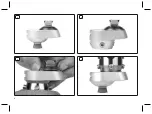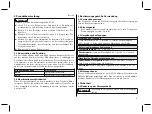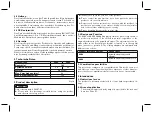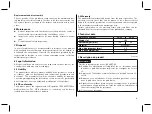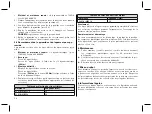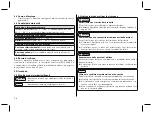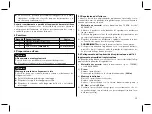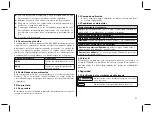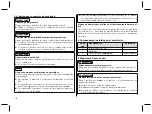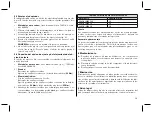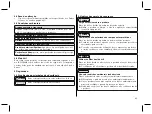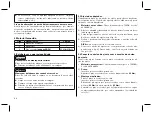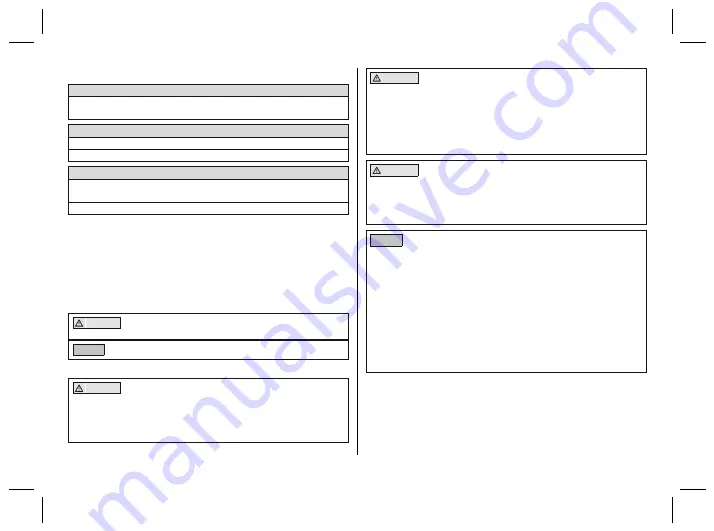
2.3 Environmental conditions
Storage and transport
Temperature range –20 °C to +60 °C (–4 °F to +140 °F), relative
humidity 20 % to 90 %, no mechanical vibrations or impacts
Allowable environmental conditions
Temperature range:
–10 °C to +45 °C
Moisture:
relative humidity: 20% to 90%, non-condensing
Unacceptable environmental conditions
Chemicals/liquids:
fresh water, salt water, perspiration, urine,
acids, soapsuds, chlorine water
Solids:
dust, sand, highly hygroscopic particles (e. g. talcum)
2.4 Service life
This prosthetic component has been tested by the manufacturer for 3
million load cycles according to ISO 10328. Depending on the
patient's activity level, this corresponds to a service life of 3 to 5
years.
3 Safety
3.1 Explanation of warning symbols
CAUTION
Warning regarding possible risks of accident or
injury.
NOTICE
Warning regarding possible technical damage.
3.2 General safety instructions
CAUTION
Excessive strain on the product
Risk of injury due to breakage of load-bearing components
►
Use the product according to the specified area of application
(see Page 6).
7
CAUTION
Unallowable combination of prosthetic components
Risk of injury due to breakage or deformation of the product
►
Only combine the product with prosthetic components that are
approved for that purpose.
►
Based on the instructions for use of the prosthetic components,
verify that they may be combined with each other.
CAUTION
Exceeding the service life
Risk of injury due to change in or loss of functionality and damage to
the product
►
Ensure that the approved service life is not exceeded.
NOTICE
Use under unallowable environmental conditions
Damage to product due to unallowable environmental conditions
►
Do not expose the product to unallowable environmental condi
tions.
►
If the product has been exposed to unallowable environmental
conditions, check it for damage.
►
If damage is apparent or in case of doubt, do not continue using
the product.
►
Take suitable measures if required (e.g. cleaning, repair,
replacement, inspection by the manufacturer or a specialist
workshop, etc.).
Signs of changes in or loss of functionality during use
Among other factors, changes in functionality can be indicated by an
altered gait pattern, a change in the positioning of the prosthetic com
ponents relative to each other and by the development of noises.
Summary of Contents for 6A53
Page 2: ...1 2 3 4 2...
Page 65: ...3 2 64 65 4 1 1 4 6A54 506G3 M8x12 5...
Page 72: ...72 4 1 1 4 6A54 506G3 M8x12 5 5 1 2 mm 710D4 Loctite 241 636K13 1 2 3...
Page 75: ...10 C 45 C 20 90 2 4 ISO 10328 3 3 5 3 3 1 3 2 74 75...
Page 77: ...506G3 M8X14 14 506G3 M8X16 16 6 30 7 8 77 8 1 8 2 2017 745 CE 8 3 9 6A53 6A54 180 16 33 20 125...
Page 79: ...3 2 78 79 4 1 1 4 6A54 506G3 M8x12 5 5 1 2 mm...
Page 82: ...2 4 ISO 10328 3 3 5 3 3 1 3 2 81 82 4 1 1 4 6A54 506G3 M8x12 5 5 1 2 mm...
Page 85: ...3 2 84 85 4 1 1 4 6A54 506G3 M8x12 5 5 1 2mm 710D4 Loctite 241 636K13 1 a p m l 2 3...


